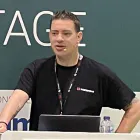In the Reality Capture World, Sometimes Less is More
Construction is about the right tool for the job, reality capture is no different
As an architect, engineer, or contractor, having the right tool for the job for each stage of a project can make all the difference. Because of the high cost of survey-grade scanners, it is easy to see why a mindset of “always-on accuracy” is pervasive in the industry. If a piece of hardware is expensive, then it makes sense to use it all the time, right? On average, 5-10% of project tasks require sub-millimeter precision accuracy. These high-precision tasks might include establishing job site control points or critical equipment and room positioning and there is no doubt that a survey-grade scanner is the right tool for these jobs.
On the other hand, the remaining 90-95% of project tasks on the site are focused on identification, coordination and resolving risks on site. Capturing the ever-changing site is still critical, but with a purpose of resolving issues quickly via collaboration and documentation. This is where reality capture can be an incredible tool for architects, engineers and contractors. Reality capture tools are used to quickly scan a site, allowing teams to generate 3D models and 2D drawings that can serve as the basis for BIM data and kickstart the modeling process in tools like Revit, Archicad, and Tekla. These models and drawings provide an accurate representation of the existing conditions on-site and reduce manual drawing time significantly by synchronizing much of the work. Condition surveys play a critical role in accurately representing these existing conditions by leveraging technology and data collection.
How Reality Capture Increases Project Efficiency
Reality capture in construction is a process used by many of today's architectural, engineering, and construction professionals that involves collecting data about a building, structure or site using a variety of technologies like 360° laser scanning or photogrammetry. The resulting point cloud data can be used at the template to create highly-detailed 3D models for use in design, decision-making, or general project management workflows. Utilizing this technology helps to identify potential issues at the outset, determine feasibility, increase accuracy, and identify changes to be made to achieve the desired result for clients. Eliminating guesswork through reality capture reduces cost overruns, rework, saves valuable time, and keeps projects on track. Reality capture technologies like LiDAR and photogrammetry have become significantly more accessible and affordable in recent years. As a result, fast, cost-effective tools for site documentation are becoming essential to the future of jobsite management—highlighting a growing range of LiDAR applications.
Document and collaborate with Pro3 - the right tool for the job
This is where the Matterport and Pro3 shine because it is a cost effective, rapid lidar camera that is accurate to +/-20 mm @ 10m. The ability to quickly ingest and understand the job site using Pro3 allows teams to track issues in a logical and visible way: document, identify, communicate and resolve quickly. Plus, working at cost and speed in these tasks allows teams to maximize efficiency and speed to eliminate potential negative impact to the project.
Pro3 is an affordable, easy to use, and accurate LiDAR solution that is effective for most architecture, engineering, and construction project tasks. Use Pro3 to create higher-density 3D models with an accuracy of +/-20mm at 10m with a max range of 100m. This greater range combined with faster individual scan time makes it possible to capture large spaces in a fraction of the time–in fact, Pro3 completes each scan in under 20 seconds. The Pro3 is light enough to carry all day and is equipped with interchangeable batteries so you can keep capturing all day. For architects, engineers and contractors, Pro3 allows teams to have a scanner on site at every stage of a project, usable by anyone, no matter their experience. Scans with Pro3 are available minutes after capture is complete (based on the size of the scan) and easy to access via a phone or tablet with the Matterport Capture App1. No need to install extensive software programs for the creation and sharing of a 3D model, because Matterport's depth of detail allows for translation of scan data to a LOD 200 BIM file in just a matter of days after capture.
By contrast, survey-grade scanners are sophisticated, expensive tools intended to capture the highest level of detail possible via a combination of advanced measurement technologies like laser, photogrammetry or radar. Scanners like these will always be indispensable for architecture, engineering, and construction projects when the task requires precise measurements. However, these survey-grade scanners tend to be less portable and user-friendly than a camera like Pro3 because they typically require more training and expertise to operate, which can cause an unnecessary slow down of documentation and collaboration task completion and place an emphasis on the software skillset of a user.
Pro3 is not designed to replace survey-grade scanners when precision is a requirement but it is a fantastic complement to these scanners. Matterport plus Pro3 is the ideal combination for fast, effective documentation and collaboration, plus you can access scans from Pro3 and other camera models anytime from your Matterport account. With remote construction collaboration, editing and decision-making capabilities distributed across global teams, the Matterport cloud makes it easier than ever to utilize a suite of 3D capture devices to identify, address, and eliminate site issues clearly and effectively. Make sure you’re choosing the right camera for the task at hand and add Pro3 to your camera lineup today.
1Pro3 requires a Matterport SaaS subscription to view scans within the Matterport Capture App. Read more about Matterport SaaS plans and camera compatibility.

